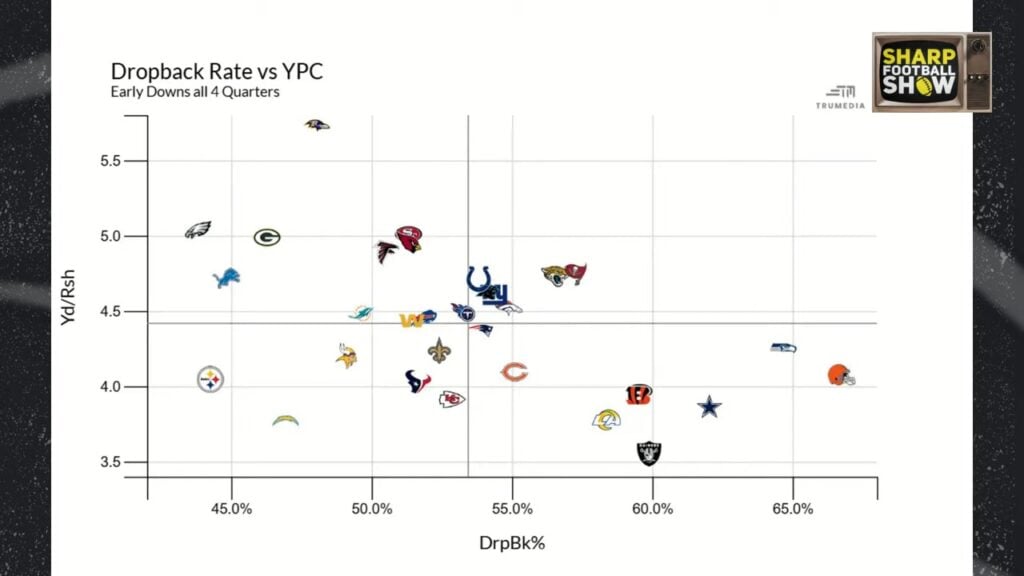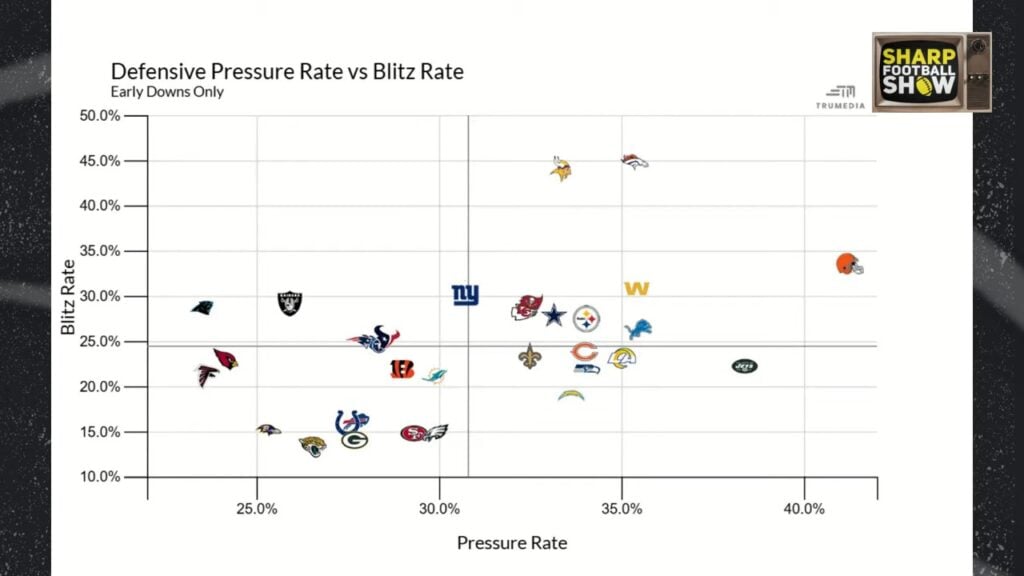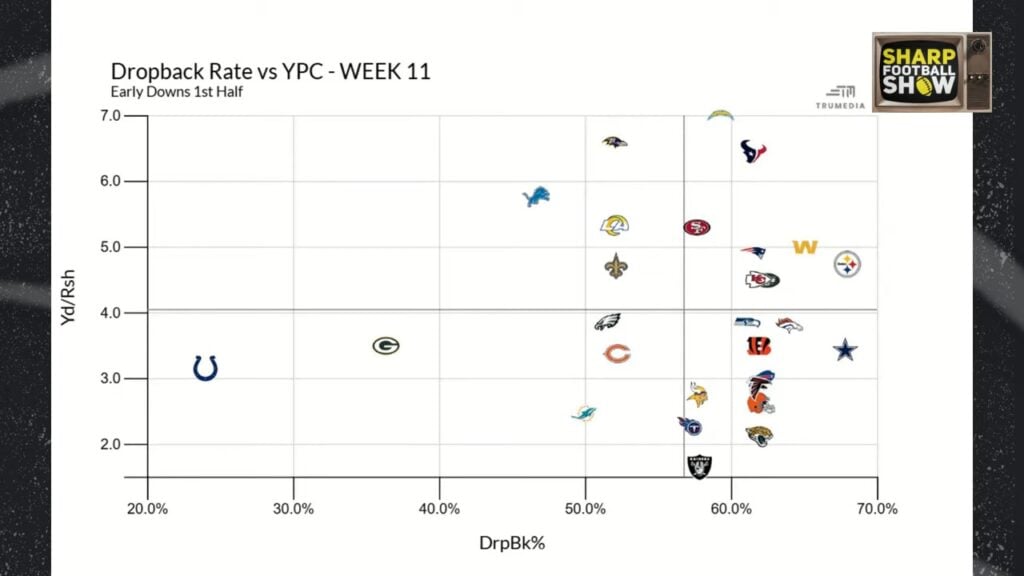It’s no secret that the Pittsburgh Steelers want to run the ball early and often, pounding their opponents into the turf while chewing clock on lengthy drives. Head coach Mike Tomlin and offensive coordinator Arthur Smith spent the entire offseason emphasizing how the team needed to reestablish its smashmouth, run-first identity that propelled the franchise to six Super Bowl wins.
While the Baltimore Ravens’ defense has struggled as a unit this season (26th in yards per game allowed at 362), their run defense is still one of the best in the NFL (second in yards per game allowed at just 77.5). Because of this, the Steelers needed to adjust their play-calling tendencies to beat the Ravens, and Arthur Smith did enough to get the job done.
Warren Sharp, NFL analyst and the founder of Sharp Football Analysis, highlighted a few key statistical trends that led to the Steelers’ Week 11 victory against the Ravens in a video posted on Tuesday.
From about minutes five-10 in the video, Sharp pinpoints a few graphs illustrating the Steelers’ low drop-back rate on early downs (second lowest behind the Eagles), as well as the Ravens’ low-blitz/pressure rate on early downs.

Basically, the Steelers love to run the ball early, and that plays right into the Ravens’ hands because they have a formidable defensive front that stuffs the run.
Meanwhile, the Ravens are near the top of the league in blitz and pressure rate on third downs (third in pressure rate), which means that the Steelers couldn’t expect to rely on third-and-medium or third-and-long passing conversions to win the game.


Unlike other Steelers offensive coordinators in recent years, Arthur Smith flipped his tendencies and made the necessary play-calling adjustments against the Ravens.
In the first half, the Steelers passed the ball at a higher rate than any other team in Week 11 in early-down situations (nearly 70%).


This is a significant statistical jump from their average passing rate, which is below 45% on early downs. And for the most part, it was successful. On early downs, Russell Wilson was 18-of-25 (72%) with 163 yards on 27 drop backs. Third-down success was a completely different story, but if the Steelers weren’t able to move the ball as well as they did on early downs, they wouldn’t have given Chris Boswell a chance to win the game with his six made field goals.
It will be interesting to see if Arthur Smith makes major adjustments in his play-calling tendencies week to week based on matchups, or if this was more of a one-time thing. After all, the Steelers still want to run, run, run with the dynamic tandem of Najee Harris and Jaylen Warren. I’d expect that the Steelers run the ball on early downs and third downs against Cleveland Thursday night. It is shaping up to be an ugly-weather game against a susceptible run defense that just let Taysom Hill look like 2010 Peyton Hillis (Browns fans and Madden players should appreciate that reference).
Regardless, it’s encouraging to see Arthur Smith successfully break off from his tendencies when needed, as it adds another layer of unpredictability for opposing defenses. Next step in the process: converting third downs and figuring out what to do in the red zone.














